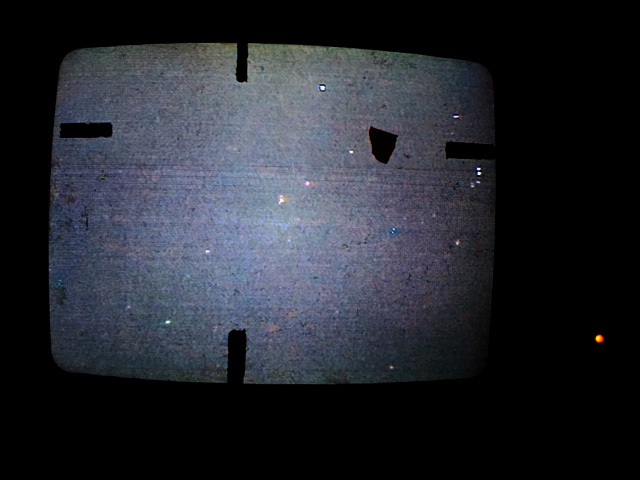
On the night of Sep 26/27, 2023, under good conditions, I acquired images of V347 Aur as part of our optical monitoring program. All data was taken with the 12-inch telescope and ASI camera.
The variable has stopped fading and sits on a second plateau.
V347 Aur is a young stellar object (YSO) which undergoes semi-periodic outbursts. I'm part of a team of astronomers who have applied for (and received) time on the XMM-Newton X-ray telescope to study this object in the fall of 2023. We have organized an observing campaign with the AAVSO to monitor the object in the optical in order to determine when the outburst begins -- if it begins! Our prediction is some time in mid-August, 2023.
These observations involved:
Notes from the night:
The position of the variable star is
RA = 04:56:57.02 Dec = +51:30:50.9
At quiesence, it has magnitude V = 16-ish, but can rise to V = 12 in an outburst.
Here's a chart from the DSS2 Red plates, 0.6 degrees on a side.

The picture below, based on a stack of images taken on UT Jul 23, 2023, shows the area in the red box above. The variable is at its quiescent level in this image.

I've marked the location of several comparison stars.
star AAVSO ID B V ------------------------------------------------------ B 140 15.134 14.001 C 127 13.617 12.660 D 154 17.491 15.361 --------------------------------------------------------------------------
Here's a picture of the guider TV when pointed at the field (pointed slightly to the left of the variable, actually).

Tonight's darks are ordinary. No significant difference between 1-sec and 60-sec darks.

Tonight's stacks were formed from 22 x 60 sec in V band and 45 x 60 in B band. I used a photometric aperture of 5 pixels (6.0 arcsec).
I noticed a very faint linear feature about 1 arcmin to the ESE of V347 Aur in the stacked B-band image. Nothing appears at this position in any other archival images from POSS I or POSS II or Pan-STARRS. I believe it's a glint from a bright star out of the field, perhaps HD 31032.
I reported the following to AAVSO:
JD filter mag
---------------------------------------------------
2460214.75 V 15.09 +/- 0.07
2460214.79 B 16.22 +/- 0.18
---------------------------------------------------
The variable's fading appears to have hit pause. It is still about 0.8 mag brighter than quiescence in V-band.

Tomorrow morning, the Trans-Neptunian Object (19521) Chaos will pass in front of a star, casting a shadow across large sections of North America.
I will attempt to observe it, so I practiced on the field this morning. Since the background star is so faint, V = 14.2, I can't use the high-speed camera (it is currently limited to exposures of about 0.05 seconds). Instead, I'll use the regular ASI camera, but read out a sub-frame region so that I can take pictures rapidly. The timing will be imprecise, but it is better than nothing.
The target is located at
RA = 06:09:56.9 Dec = +31:21:23.2
I took pictures without any filter, in order to maximize signal-to-noise. From a set of images with 1-second exposure times, I derived this sigma-vs-mag graph.

The target is the right-most symbol on this graph; it has a scatter of 0.06 mag, which should be just fine for detecting the occultation (if the shadow should pass over RIT).
I also tried using 0.5-second exposures. Here's the corresponding sigma-vs-mag graph:

Here the scatter is larger, not surprisingly. The target isn't located at the right-hand edge of the graph this time. It appears at mag = 14.0 or so, with a scatter of 0.15 mag.
Since the duration of this event is so long -- the maximum is around 105 seconds! -- I figure that the slightly longer 1-second exposure is a better choice.
Now, reading out the chip takes a significant amount of time. I experimented with several different sub-frame regions, and measured the following:
Region size Readout/transfer time
(pixels binned 4x4) (seconds)
----------------------------------------------------------
2394 x 1597 8 seconds
262 x 336 3 seconds
82 x 78 1.5 seconds
----------------------------------------------------------
I can barely fit one comparison star into the frame if I use a box of size 100 x 60 pixels, or two comparison stars if I increase the box to 100 x 100 pixels. I will probably choose the 100 x 100 size in order to have extra room for small amounts of telescope drift -- but I'll have to keep a close eye on the frames and make small adjustments to the pointing as necessary.